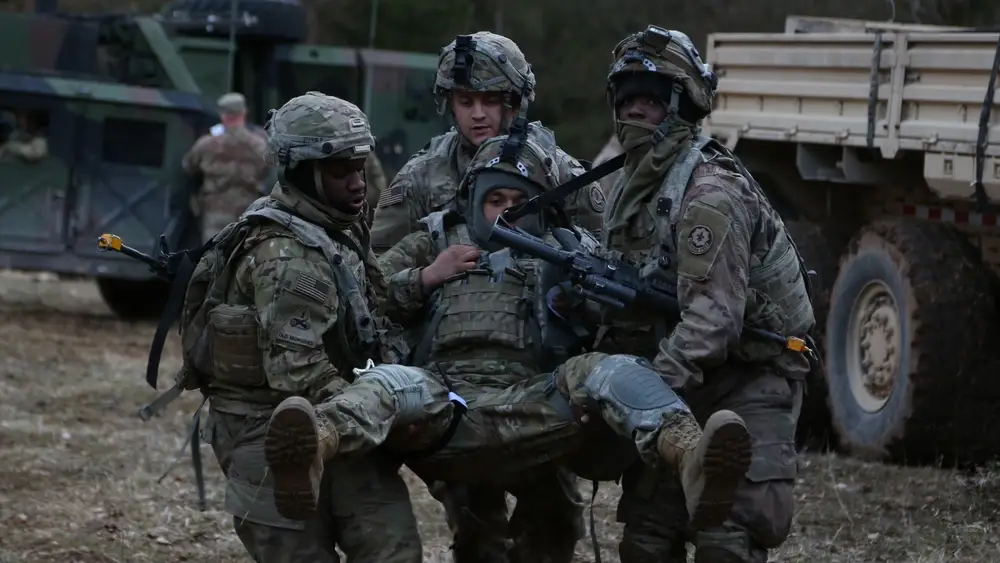4 dangers medics face while deployed in combat

U.S. Army Soldiers assigned to 2nd Cavalry Regiment evacuates a casualty during Dragoon Ready 21 on April 13, 2021 at the Hohenfels Training Area. Daily training, conducted in realistic environments, under realistic circumstances, ensures our forces maintain the highest levels of proficiency and readiness for worldwide deployment. (U.S. Army photo by Spc. Brandon Best)
SUMMARY
Being deployed to a war-zone is dangerous for any of our brave troops, regardless of MOS- including medics. As we step on to the battlefield, willing to sacrifice our lives, the enemy watches, attempting to understand the many roles of our allied patrols.
No matter how many men we have on our side, we're in a target-enrich environment, and our troops are never truly safe.
One role the enemy consistently looks to harm is the squad's doctor/medic/corpsman. Without them, the foot patrols can't function properly.
So, check out these four dangers that medics face while deployed in combat.
1. Being in very close enemy contact.
The medics will take care of anyone if need be. This includes the bad guys if they're sick or injured enough. We hate treating someone who just tried to kill us, but if we need to look down their throats or bandage a bleed, we will.
But always be careful, the enemy may have a secondary agenda. Getting close to them may spark an attack.
2. Getting discovered as the squad's doctor.
The enemy is consistently monitoring us while we're on patrol, trying to figure out which role each troop plays. Officers, radiomen, and medics are highly targeted individuals.
Once the enemy learns who the medic is, it's common for them to take potshots at the "Doc," hoping to score a kill.
3. Who takes care of the "Doc" when they get hurt?
Usually, each patrol only has one medic or corpsman on deck. Our non-medical troops typically get basic, life-saving training to stop significant bleeds and other emergent wounds, but not enough to keep someone stabilized for long periods of time.
4. Medics don't usually have time to put on latex gloves.
When a patient is bleeding, every second counts toward saving their life. Although putting on gloves is the sanitary option, it takes precious time you'll never get back.
Often, Docs have to treat allied patients quickly while under fire, meaning they touch potentially infected bloodily fluids.
SHARE
